mobile View, to the German Version tap the flag


- historical landscape and former duchy in Germany
• Flags
• Meaning/Origin of the Flag
• Coat of Arms
• Meaning/Origin of the Coat of Arms
• Map
• Numbers and Facts
• History
• Origin of the Country's Name
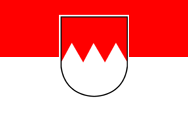
Flag of Franconia





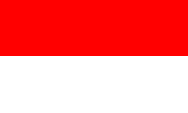
Colours of the country




The flag of Franconia shows the from the coat of arms of the country derived colors, red and white, in two horizontal stripes. In the coat of arms they are presented in the Franconian Rake, an ordinary and a line of partition. The shield is in this way divided – per fess indented – between red and silver, namely red over silver. Just in the same way the colors on the flag are arranged.
Source: Volker Preuß


Coat of arms of Franconia

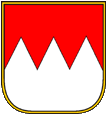
since 1987,
Symbol of Franconia,
Source:
www.stmi.bayern.de

The coat of arms shows the Franconian Rake, an ordinary and a line of partition. The shield is in this way divided – per fess indented – between red and silver, namely red over silver. The rake illustrates the conditions in heaven and earth, with three peaks upwards signifying the Trinity, and with four peaks downwards the four cardinal directions. Probably the coat of arms goes back to ecclesiastical heraldry, because it appeared in the early 14th century for the first time on the grave of the Prince Bishop of the diocese of Würzburg. It should probably represent the nominal Frankish dukeship, which held the prince bishops. A symbol of Franconia did not exist, but the ancient people of the Franks have used these colors. The Franconian rake became popular in 1835 when it arised in the arms of Bavaria to represent the Frankish territories that that had been annexed to Bavaria between 1807 and 1815.
Source:
Volker Preuß

The coat of arms of Franconia is used by some authorities, or arises as an ordinary in some coats of arms or seals. The use of it by individuals is prohibited or a license is required. Nevertheless, there is the desire to use the coats of arms of Franconia without permission and by anyone. For these purposes, an appropriate symbol (country icon) was created in 1987.
Source: www.stmi.bayern.de,
Volker Preuß

Franconia in 11th century:
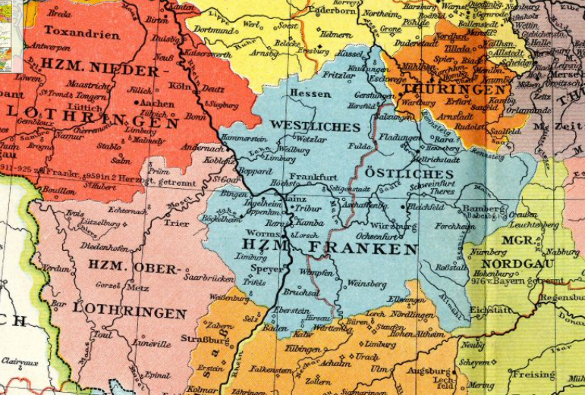
Source: F. W. Putzgers Historischer Schul-Atlas
Franconia today:
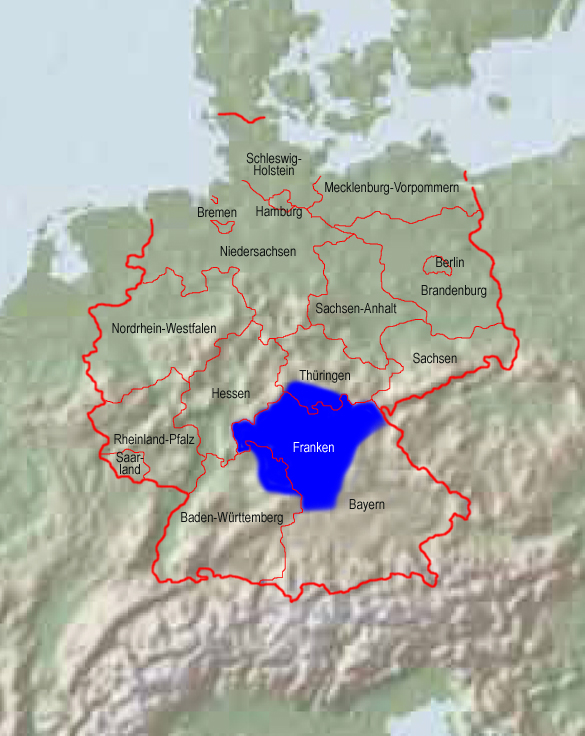
Source:
Freeware, University of Texas Libraries,
modyfied by: Volker Preuß

Area: 10.425 square miles
Inhabitants: 4.200.000
Density of Population: 403 inh./sq.mi.
Capitals: Wuerzburg, Bayreuth and Ansbach

ca. 10 A.D. · Marcomanni and Suebi settle in the region
ca. 50 to 250 A.D. · the Limes, the fortified border of the Roman Empire runs through the region
250 · Alemanni and Juthungi settle in the region
6th century · victory of the Franks over Alemanni and Thuringians, the region comes to the kingdom of the Franks, the dioceses of Mainz, Worms, Speyer and Wuerzburg are summarized in the region of eastern Franconia
7th century · immigration of Slavic tribes, beginning Christianization
9th century · birth of the Duchy of Franconia (today's Hesse, northern Baden-Wuerttemberg, southern Thuringia, eastern Rhineland-Palatinate and the northwest of today's Bavaria)
939 · death of Duke Eberhard, disintegration in eastern and western Franconia, struggle for power between Popponians, Conradines and Babenbergs
1024 · the Conradines become kings of the East Frankish kingdom
12th century · emergence of the Burgrave County of Nuremberg
1190 · the Zollern (Hohenzollern) are Burgraves of Nuremberg
1209 · the Teutonic Order purchases possessions in Franconia
13th century · Franconia disintegrates terrtorial among others into the Counties of Henneberg, Wiltberg, Wertheim and Castel, the Meranic country and the Bishoprics of Bamberg, Wuerzburg and Fulda, Aschaffenburg comes to the Archbishopric of Mainz
1512 · formation of the frankish imperial district, Dukes of Franconia are nominally the bishops of Wuerzburg
16th century · establishing the frankish counts bench in the Reichstag, to represent the interests of the imperial counts of Franconia
1525 · German Peasants' War
1618-1648 · Thirty Years' War, Franconia becomes a theater of war, half of the Franconian population loses their life, Franconia impoverishes
1792 · the Margravates of Ansbach and Bayreuth come to Prussia (house of Hohenzollern)
1792 1796, 1800 and 1805 · invasions of French revolutionary troops under Napoléon (1804 Emperor of France) into the German Empire
1803 · German Mediatisation (Reichsdeputationshauptschluss), transformation of the territorial partition of the German Empire, ecclesiastical possessions become confiscated, old princely territories and free cities become confiscated or dissolved or annexed to old or new principalities – large areas of Franconia come to Bavaria, smaller come to the Principality of Aschaffenburg and the Principality of Regensburg, parts come in 1805 to the Electorate of Wuerzburg
1806 · Prussia cedes Ansbach to Bavaria
1810 · Prussia cedes Bayreuth to Bavaria, the Principality of Regensburg comes to Bavaria, Aschaffenburg comes to the Grand Duchy of Frankfurt
October 1813 · defeat of Napoleon at Leipzig
1814 · Wuerzburg comes to Bavaria
1815 · Congress of Vienna, reconstruction of Europe after the era of Napoleon, the ownership and the administrative partitions in the former German Empire become restored, but not the sovereignty of the ecclesiastical countries, their possessions become transferred to old or new principalities, Aschaffenburg and Wuerzburg come as last Frankish territories to Bavaria
Source: Atlas zur Geschichte,
Wikipedia (D),
Volker Preuß

The name of the country goes of course back to the people of the Franks, which lived here - at least from the middle of the 5th century, but also in Lorraine, Flanders and Francia.
Source:
Volker Preuß


![]()












